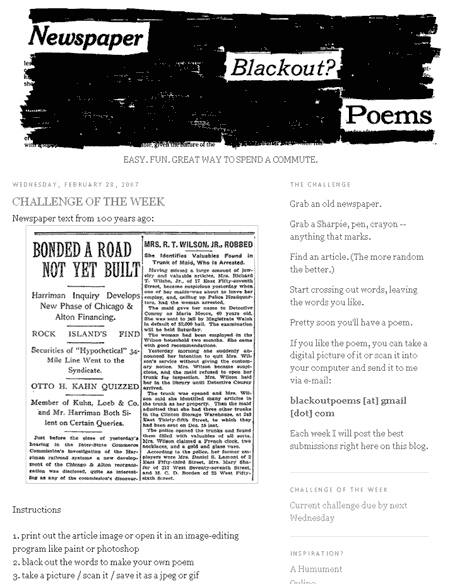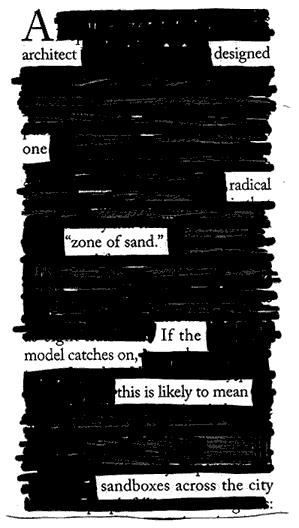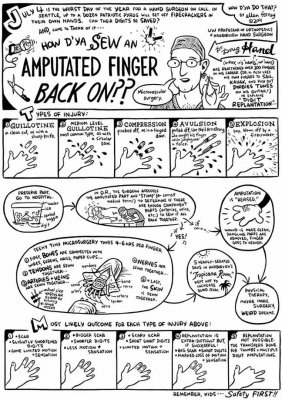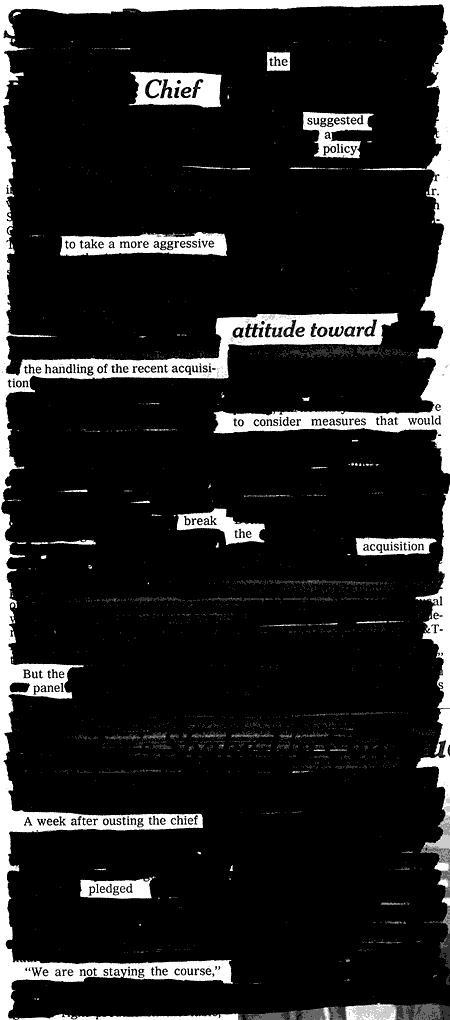I’m not sure if it will fly or not, but so many people have expressed interest in these things that I’ve decided to create a blog dedicated solely to them. There’s going to be a “Challenge of the Week,” and also an “open submissions” feature where I’ll post really good stuff people send me.
newspaperblackoutpoems.blogspot.com
Check it out. Spread the word! Send me your poems!
blackoutpoems [at] gmail [dot] com





